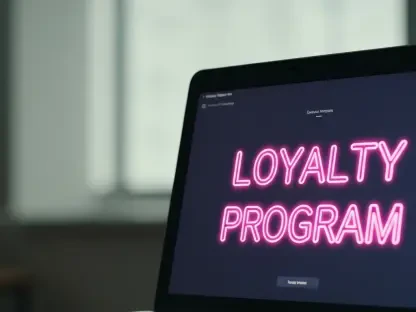Welcome to an eye-opening conversation with Zainab Hussain, a renowned e-commerce strategist and retail expert with a wealth of experience in customer engagement and operations management. With a keen eye for the nuances of customer experience, Zainab has spent years uncovering the hidden challenges businesses face in truly understanding customer satisfaction. In this interview, we dive into the often-overlooked world of Silent Sufferers, explore the flaws in traditional metrics like First Contact Resolution (FCR) and Digital Containment Rates, and discuss the startling impact of these issues on customer loyalty and business outcomes. Join us as Zainab shares her insights on why current approaches fall short and what innovative strategies can help turn things around.
Can you start by explaining what you mean by ‘Silent Sufferers’ and why they’re such a critical issue in customer experience?
Absolutely. Silent Sufferers are customers who encounter problems or frustrations but choose not to voice their complaints or reach out for help. They’re a big deal because they represent a hidden majority—research shows they can outnumber complainers by as much as 20 to 1, with an average of about 6 to 1. Unlike vocal customers, their silence means businesses often don’t even know there’s an issue until it’s too late, like when they quietly churn or stop engaging. This invisibility makes them a massive blind spot in customer experience, and ignoring them can lead to serious long-term damage.
How did you first come across the concept of Silent Sufferers, and what made it resonate with you?
I stumbled upon this idea early in my career while working on a project for a major retailer. We were analyzing customer feedback, and I noticed that the volume of complaints didn’t align with the drop-off in repeat purchases. After digging deeper through academic research on Customer Complaint Behavior, I realized many customers were just walking away without saying a word. It struck me because it challenged the assumption that satisfied customers stay quiet—many of these Silent Sufferers were deeply unhappy, and we were missing their signals. That realization shifted how I approached customer engagement entirely.
Why do you think so many customers choose to stay silent when they face issues with a product or service?
There are several reasons, and they vary by individual. Some customers simply give up because they don’t know how or where to complain. Others might feel hesitant or fear some form of pushback if they speak up. There’s also a group that’s just reasonably content—Happy Campers, we call them—but research shows Silent Sufferers outnumber them by three or four to one. Often, it’s a mix of frustration and resignation; they don’t believe complaining will change anything, so they quietly disengage, which is a huge loss for businesses trying to build loyalty.
Shifting gears to First Contact Resolution, or FCR, why do you believe traditional methods of measuring it are so inaccurate?
Traditional FCR metrics—like asking customers if their issue was resolved, polling frontline staff, or tracking follow-up contacts within a week or two—are flawed at their core. Customers often don’t even know if their issue is fully resolved when surveyed, and response rates are notoriously low. Frontline staff can introduce bias, especially if their performance reviews are tied to FCR scores. And tracking repeat contacts doesn’t account for unrelated issues or customers who never reach out again because they’ve given up. These methods paint an overly rosy picture and miss the real story of unresolved pain points.
Let’s talk about Digital Containment Rates. What makes the current approaches to calculating these rates misleading?
Digital Containment Rates, which measure how often issues are resolved through digital tools like apps or chatbots without needing live support, are often skewed. Relying on customer feedback assumes they’ll respond and accurately assess resolution, which isn’t always the case. Similarly, assuming an issue is contained just because a customer doesn’t seek live help afterward ignores Silent Sufferers who may abandon the process entirely out of frustration. These metrics overestimate success and don’t reflect the true effectiveness of digital channels.
You’ve highlighted some striking numbers, like FCR dropping from 72% to around 45-48% when factoring in Silent Sufferers. Can you walk us through how you arrived at these figures?
Sure. We start with the Silent Sufferer to Happy Camper to Complainer ratio, or S2:HC:C, which suggests non-complainers vastly outnumber those who speak up, and most of those non-complainers are dissatisfied. If a reported FCR is 72%, meaning 28% of customers didn’t get resolution, adjusting for Silent Sufferers—who don’t report but are often unresolved—drops the real FCR significantly. Using this ratio, we estimate it’s closer to 45-48%. It’s a sobering recalculation that shows how much worse the situation is than standard metrics suggest.
You’ve noted that Silent Sufferers contribute to high churn rates, like 88% in commercial settings. Can you elaborate on the long-term consequences of overlooking these customers?
Absolutely. In commercial settings, Silent Sufferers often leave as soon as their contract ends or a better option appears, contributing to that 88% churn rate. They might also buy less over time or reject upsells, all without giving any feedback. For businesses, this silent exodus erodes revenue and growth potential. In government services, where switching isn’t an option, it can lead to deeper issues like financial or health struggles for customers, alongside persistent frustration with the system. In both cases, the lack of dialogue means organizations miss opportunities to fix systemic problems.
What innovative approaches or tools do you think businesses should adopt to better identify and address Silent Sufferers?
One promising direction is leveraging AI and large language models to proactively detect patterns of disengagement, like abandoned carts or reduced activity, that might indicate a Silent Sufferer. Instead of waiting for complaints, businesses can reach out with personalized solutions or check-ins. I also advocate for what I call Voice of Data, or VOD, which focuses on behavioral data over expressed feedback. It’s about listening to what customers’ actions tell us, not just their words, to uncover hidden issues and rebuild trust before it’s too late.
Looking ahead, what is your forecast for the future of customer experience metrics like FCR and Digital Containment Rates?
I believe we’re on the cusp of a major shift. As more businesses recognize the limitations of traditional metrics, we’ll see a move toward data-driven, behavior-focused approaches like Voice of Data. AI will play a huge role in identifying Silent Sufferers and recalibrating FCR and Digital Containment Rates to reflect reality, not illusion. My hope is that within the next few years, we’ll develop standardized, accurate ways to measure these metrics, leading to a deeper understanding of customer needs and, ultimately, stronger loyalty. But it’ll take a collective push from CX leaders to rethink how we define success.









